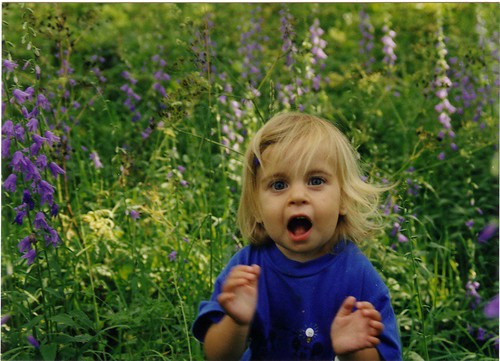Licorice Notes
 Happy Spooky Halloween!
Happy Spooky Halloween!Today will be dedicated to licorice notes – the notes used to flavour the gooey chewy sticky black candy that is of the signature flavours of this holiday. Licorice notes are strange. They are usually either loved or loathed. Very few people have intermediate feelings about them. The peculiar scent of licorice notes is a reconciliation of contrasts: spicy warmth and minty chill; rough dryness with smooth, mouthwatering sweetness. Perhaps it is the sweetness of licorice that is the most peculiar. I used to chew licorice root as a little girl, and it was a completely sugar-free candy, yet felt very sweet. I am saying “felt” rather than “tasted” because I think the licorice aromas cheat on the senses to create an impression of a sweet taste that is not really there.
Licorice root is not the only source for licorice sorcery. In fact, most licorice candies are flavoured with oils of aniseed, star anise and fennel. Anise is the sweetest of all three, and feels warm and diffusive. Its ability to mask odour only adds to its mystique. Star Anise is a tad more dry, clean and spicy in feel. Sweet Fennel is sweet indeed, with a hint of green. Tarragon is another plant with a licorice aroma, only greener and herbal, with a sense of tangy freshness. Tarragon absolute is a thick, syrupy version of tarragon, accentuating the licorice-candy qualities of this herb.
Here are a few perfumes for the licorice lovers amongst us. These may not mask your body odour when you go fishing or ghost busting, but they sure are olfactory stunners thanks to the mystical presence of licorice notes.
Apres l’Ondee might have been one of the very first scents to use aniseed note “out of the box” and in an unusual context. Here, the obscure quality of anise complements the melancholy of violet and orris.
L’Heure Bleue further expanded on this theme, and here the aniseed note is paired with the almost-gourmand almondy notes of heliotrope, sweet violet, carnation and woods.
Lolita Lempica (Au Masculine) makes a definite gourmand statement that is once again paired with violet. Vanilla and rum add sweetness, and woods and cistus add an underlining pine-like masculinity that is maintained through out the composition. The feminine version is just as high on licorice and anise, again paired with violet, only with a slightly different base (vanilla, tonka, musk and vetiver).
Chinatown takes licorice notes to yet an even more extreme sweetness, as star anise and fennel do in the infamous Five Spice. Like a Five Spice salt, Chinatown creates a strange, sweet and warm sensation, balanced by exaggeration as it is paired with even sweeter white florals and peach juice, and a counterpoint of patchouli and vetiver.
Eau de Reglisse, Caron’s most recent addition to their outstanding collection, takes a different route. Here licorice is taken as it is – the dry root – and infused into a refreshing lemonade drink along with litsea cubeba. The licorice is subtle and is revealed once the sparkling lemon notes of litsea have subsided. It is more like chewing licorice roots than the gooey candy. Eau de Reglisse is an interesting eau, while being cool and refreshing still retains the woody warmth of licorice twigs.
More perfumes with licorice notes:
Anice (Etro)
Anisia Bella (Guerlain)
Jean-Paul Gautier Classique (aniseed top note)
Piper Nigrum (Lorenzo Villoresi)
Salvatore Ferragamo for men
Rive Gauche pour homme
Silver Rain
Indigo
Black Licorice
And two of my Zodiac perfumes: Sagittarius and Cancer
Licorice Recipe: CHOCOLATE & LICORICE LIP BALM
A fun activity that is easy to make. Young children will love making it - and using this fragrantly sweet lip treat.
Ingredients:
4 Tbs. almond oil
2.5 Tbs. coconut oil
3 Tbs. beeswax (unbleached), grated
1.5 Tbs. dark chocolate (at least 85%), preferably unsweetened
1 tsp. honey
1 Capsule Vitamin E
10 drops aniseed oil
10 drop sweet orange oil
(or any mixture of these two oils)
Measure and mix all the ingredients except for the essential oils and vitamin E.
In a Bain Marie (double boiler), melt them all down over low-medium heat.
Once all the ingredients have melted, remove from heat and let it slightly cool off.
Add the essential oils and vitamin E, and pour immediatley into containers. Make sure the consistency is neither too liquid nor too hard to touch and use.
Labels: Apres l'Ondee, Black Licorice Perfume, Building Blocks, Children, Chinatown, Eau de Reglisse, Halloween, Indigo Perfume, l'Heure Bleue, Licorice, Perfume Review, Recipes


























